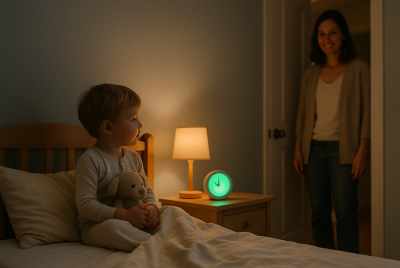Baby Boy Swaddles Guide: Tips, Tricks, and Must-Know Info
We may earn a commission for purchases made using our links. Please see our disclosure to learn more.
Congratulations! You’re about to bring a tiny bundle of joy into the world! Like me, you’re undoubtedly adrift in a sea of infant items, all of which seem to be more vital than the others. The swaddle is one of those things that keeps showing up. Perhaps you’re asking yourself, “Is this truly necessary?I had the same question. Together, let’s explore the world of baby boy swaddles and determine what’s what.
What is a Baby Boy Swaddle?
A baby boy swaddle is essentially just a plain cloth that you wrap tightly around your infant. The theory is that it provides comfort and promotes more restful sleep for your kid by simulating the womb (remember how snug that used to be for your tiny one?). Yes, that is swaddling! You’ve undoubtedly seen those adorable photos on Instagram of infants wrapped like little burritos.
Why Do Babies Need Swaddling?
I understand. At first, wrapping your infant up like a tiny mother may seem strange. But consider this: your kid felt safe and secure the entire nine months that they were in a warm, cozy environment. They find themselves in the open world all of a sudden, and it’s a little bit much. Their little arms won’t thrash about because swaddling helps reproduce that snug feeling and prevents them from waking up and being scared half to death from those abrupt, jerky movements, often known as the Moro reflex.
What Makes a Good Swaddle?
Not all swaddles are created equal—trust me, I’ve been down that road. A good swaddle is soft, breathable, and most importantly, safe. You don’t want something that’ll make your baby too hot or restrict their movement too much. Go for lightweight fabrics like cotton or muslin. Here’s a hint: the swaddle should fit snugly without being too tight.. We’re aiming for cozy, not constricted.
Types of Baby Boy Swaddles
Swaddles come in a few different varieties. Let’s break them down so you know what’s out there:
1. Traditional Swaddle Blankets
These are the big squares of fabric you might be most familiar with. You fold them into a triangle, do a little tuck and roll, and voilà! It does take some practice to get it just right, but once you do, these are super versatile.
2. Swaddle Sacks
These are like little sleeping bags with Velcro or zippers. They make swaddling foolproof (great for those of us who struggle with traditional swaddling at 3 a.m.). No folding or tucking necessary!
3. Transitional Swaddles
For when your baby starts rolling over and needs more freedom. These let your baby’s arms be free while still keeping them cozy around the torso. Think of it as the in-between stage—like when you switch from a crib to a toddler bed (but less stressful).
Choosing the Right Material for Baby Boy Swaddles
This is where things get a little tricky. You’ve got a lot of fabric options, but here’s a quick rundown of the most common ones:
Cotton
Cotton is always a solid choice. It’s soft, breathable, and keeps your baby cool. Perfect for everyday swaddling.
Muslin
Muslin is lightweight and has a bit of stretch. I loved these for the summer months when the weather was warmer, and my little one still needed to be wrapped up.
Fleece
Fleece swaddles are super warm, so they’re great for winter babies. Just be careful not to overheat your baby—layering can get tricky with these.
Bamboo
Bamboo swaddles are next-level soft. They’re also hypoallergenic, which is a lifesaver if your baby has sensitive skin.
How to Swaddle Your Baby Boy: Step-by-Step
Swaddling seems complicated at first, but you’ll get the hang of it. (And if you don’t, that’s okay too—swaddle sacks exist for a reason!) Here’s a quick step-by-step guide:
- Lay the blanket flat on a surface, folding one corner down to make a triangle.
- With their shoulders slightly below the folded edge, lay your infant on their back.
- Tuck one arm down by their side and fold that side of the blanket over them, tucking it snugly under their body.
- Lift the blanket’s lower corner and tuck it beneath their chin.
- Fold the remaining side of the blanket over them and tuck the other arm under, making sure it’s secure from below.
(And don’t worry—if you mess up the first few times, you’re not alone. I’ve definitely redone my swaddle job more times than I can count!)
How Long Should You Swaddle a Baby Boy?
Here’s where things get a little tricky. Swaddling is great for newborns, but at some point, you’ve got to stop. Most experts suggest you stop around 2 to 3 months—or when your baby starts showing signs of rolling over. The last thing you want is for your baby to roll over while swaddled and not be able to roll back. Safety first!
Benefits of Swaddling Your Baby Boy
There are so many reasons to swaddle your baby boy, and here are the big ones:
- Better sleep: The snugness of the swaddle reduces the startle reflex, which means your baby wakes up less often.
- Comfort and security: Swaddling mimics the feeling of being in the womb, making babies feel safe and sound.
- Easier handling: Swaddled babies are easier to hold (and who doesn’t want that little baby burrito feeling?).
Potential Risks of Swaddling (and How to Avoid Them)
Swaddling is generally safe, but like with everything else, there are some things to keep in mind:
- Overheating: Babies can get too hot in a swaddle. Always choose breathable fabrics and avoid overdressing your little one underneath.
- Hip dysplasia: Make sure the swaddle isn’t too tight around the hips. Your baby should still be able to move their legs freely.
- Rolling over: You should cease swaddling your baby as soon as they attempt to roll over. A rolling baby in a swaddle is a recipe for disaster.
When to Stop Swaddling Your Baby Boy
Like I mentioned earlier, most babies start rolling between 2 and 4 months. When that happens, it’s time to ditch the swaddle. You can transition to a sleep sack or something that gives them more freedom of movement.
How to Transition from Swaddling
The transition from swaddling can be… challenging (putting it mildly). But there are a few tricks to make it smoother. One method is to start by swaddling with one arm out, then eventually both arms. You can also try a transitional swaddle that allows for more movement while still keeping that cozy feeling.
Swaddling Alternatives
Not all babies love being swaddled (my second one despised it). If your little guy isn’t into swaddling, don’t force it. Some babies sleep just fine in a sleep sack, which is essentially a wearable blanket that allows for more movement.
Can You Swaddle a Baby Boy Too Much?
Yes! Swaddling should mainly be for sleep times. Babies need to move freely when they’re awake to help with their development. So, save the swaddle for naps and bedtime.
The Importance of Safe Swaddling Practices
Safety first, always. Make sure your baby is always on their back to sleep, and never swaddle too tightly around the chest or hips. Avoid using heavy blankets or layering too many clothes underneath the swaddle, and keep an eye on your baby’s temperature.
Swaddling in Different Seasons: What You Need to Know
Swaddling in winter? You might want something warmer, like fleece. For summer, stick with something lighter like muslin or bamboo. Keep an eye on your baby’s temperature and adjust the swaddle and clothing accordingly. (Pro tip: feeling the back of their neck is a good indicator if they’re too hot or cold.)
Swaddling and Sleep: How It Helps Your Baby Sleep Better
One of the main reasons parents swear by swaddling is that it helps babies sleep longer. Swaddling keeps babies from startling themselves awake and gives them that cozy, secure feeling that helps them drift off more easily.
What if Your Baby Boy Doesn’t Like Swaddling?
Some babies just aren’t into it—and that’s okay. If your baby fusses every time you try to swaddle him, don’t stress about it. Try a different type of swaddle, or skip it altogether and see how he does in a sleep sack.
Related Products to Baby Boy Swaddles
Swaddles are great, but they’re not the only baby sleep product you’ll need. Here are a few related items to consider:
1. Sleep Sacks
Once your baby outgrows the swaddle, a sleep sack is a fantastic alternative. These wearable blankets provide warmth and security without restricting movement, making them perfect for older babies.
2. Swaddle Transition Products
When your baby is ready to transition from swaddling, there are swaddle transition products that allow for arms-out sleeping but still offer some of that swaddle snugness around the torso.
3. Baby Blankets
While not great for swaddling (too much of a suffocation risk), baby blankets are ideal for tummy time or stroller rides. Go for soft, breathable materials like cotton or muslin.
4. Sleep Aids
White noise machines and pacifiers are lifesavers alongside swaddling. White noise can help mimic the sounds of the womb, and pacifiers can help soothe your baby (and even reduce the risk of SIDS).
5. Swaddle Clips and Fasteners
If you’re struggling to keep a traditional swaddle blanket in place, swaddle clips or fasteners can make things easier. They hold the blanket securely, so you don’t have to keep redoing it.
6. Baby Monitors
Once your baby starts transitioning from swaddle to sleep sack, a baby monitor can give you peace of mind. You can keep an eye (or ear) on your little one as they sleep, without constantly checking in.
Risks Associated with Swaddling
SIDS Risk:
Some research suggests swaddling may increase the risk of SIDS, particularly in babies who aren’t used to it. Swaddling might reduce a baby’s ability to wake up during critical sleep periods. That’s why it’s so important to approach swaddling cautiously, especially for babies under six months old, when the risk of SIDS is highest.
Developmental Concerns:
Tightly swaddling an infant’s hips can lead to developmental dysplasia of the hip (basically, the hip joint doesn’t form properly). Make sure your baby’s legs have enough room to bend and move freely.
Breastfeeding Impact:
Some people worry that swaddling can interfere with skin-to-skin contact, which is super important for breastfeeding. There isn’t much evidence that swaddling has long-term negative effects on breastfeeding, but it’s still a good idea to prioritize skin-to-skin time, especially in those early days.
Conclusion: Is Swaddling Right for Your Baby Boy?
Swaddling can be a total game-changer. It provides comfort, helps with sleep, and gives you a bit more peace of mind (which, let’s be honest, we all need). But every baby is different, so don’t be afraid to switch things up if it’s not working. Trust your instincts—what works for your baby is what matters most.
FAQs About Baby Boy Swaddles
- Can I swaddle my baby too tightly?
Yes, in fact! What you want is a swaddle that is secure but not tight. You want it to feel secure without restricting your baby’s movement, especially around the hips. - When should I stop swaddling my baby boy?
The moment your baby tries to roll over, which normally happens between two and four months, you should cease swaddling them. - Can I use any blanket to swaddle my baby?
It’s best to use a swaddle-specific blanket made from breathable materials like cotton or muslin. Regular blankets can be too thick and not stretchy enough. - What should my baby wear under a swaddle?
Dress your baby in something light under the swaddle, like a onesie. You don’t want them to overheat, so adjust depending on the temperature. - What happens if my infant boy objects to being swaddled? If your baby hates swaddling, don’t force it! Some babies just prefer more freedom. Try a sleep sack instead and see how they do.
So there you have it—the ins and outs of baby boy swaddles. Hopefully, this guide has answered your questions and helped you feel a bit more confident in this whole parenting thing. You’ve got this!




